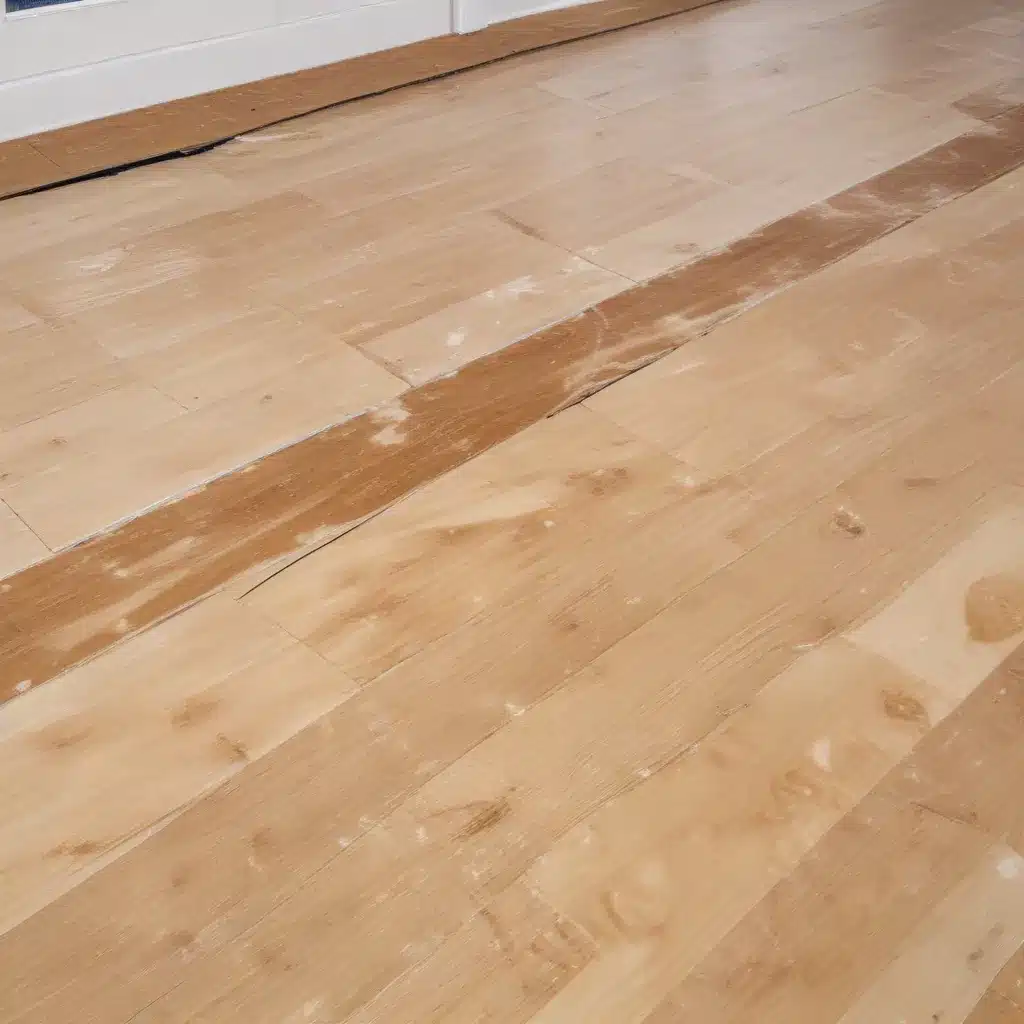
As an experienced water damage restoration specialist in Orlando, Florida, I’ve seen firsthand the devastating impact that water can have on hardwood floors. From burst pipes to flooding, the damage can range from unsightly cupping and warping to complete structural failure. However, with the right techniques and a comprehensive approach, it’s often possible to restore these floors to their former glory.
Understanding the Causes of Water Damage in Floors
When it comes to water damage, the key is to address the root cause. The most common culprits are leaks from plumbing, appliances, or even roof and window issues. Over time, the constant exposure to moisture can cause the wood to swell, leading to cupping, buckling, or even complete delamination.
Another widespread problem is the growth of mold and mildew, which can thrive in damp environments. Not only does this affect the appearance of the floors, but it can also pose serious health risks if left untreated. Addressing these underlying issues is crucial before attempting any restoration work.
Assessing the Extent of the Damage
The first step in any water damage restoration project is to thoroughly assess the extent of the damage. This involves a careful inspection of the affected area, looking for signs of warping, cupping, and deterioration. In some cases, the damage may be superficial and limited to the surface of the wood, while in more severe cases, the structural integrity of the floor may be compromised.
One important tool in this assessment process is a moisture meter, which can help determine the exact moisture content of the wood. This information is crucial in determining the appropriate course of action, as different moisture levels may require different treatment methods.
Drying and Dehumidification
Once the extent of the damage has been determined, the next step is to begin the drying and dehumidification process. This typically involves the use of powerful fans, dehumidifiers, and in some cases, specialized drying equipment. The goal is to reduce the moisture content of the wood to a level that is suitable for restoration.
During this phase, it’s important to monitor the progress closely and make adjustments as needed. Patience is key, as the drying process can take several days or even weeks, depending on the severity of the damage.
Mold Remediation
If the water damage has led to the growth of mold or mildew, it’s essential to address this issue before proceeding with the restoration work. Mold can be a serious health hazard and can quickly spread to other areas of the home if left untreated.
Our approach to mold remediation involves a thorough cleaning and disinfection of the affected areas, using specialized antimicrobial solutions. In some cases, we may need to remove and dispose of severely damaged materials to prevent the spread of the mold.
Floor Repair and Refinishing
Once the drying and mold remediation processes are complete, it’s time to begin the floor repair and refinishing work. Depending on the extent of the damage, this may involve sanding, patching, or even replacing individual boards.
In cases of severe cupping or warping, we may need to use specialized techniques, such as applying clamps to the floor to slowly straighten the boards. This process can be time-consuming, but it’s often the only way to restore the floor to its original condition.
For minor damage, a water-based clear finish may be a quick and effective solution, providing a thin layer of protection without the need for a full refinishing.
Preventing Future Water Damage
Of course, the ultimate goal is not only to restore the floors but to prevent future water damage from occurring. This may involve addressing the root cause of the problem, such as fixing leaks, improving drainage, or upgrading appliances.
In some cases, homeowners may also consider using epoxy as a permanent fix for plumbing issues, as it can create a durable and water-resistant barrier. However, it’s important to ensure that any such repairs are properly installed and maintained to avoid further problems down the line.
The Importance of Professional Assistance
While it’s possible for some homeowners to tackle minor water damage on their own, the reality is that most water-related issues require the expertise of a professional restoration company. Water damage can be complex, and improper treatment can lead to further problems, such as mold growth or structural instability.
At Orlando Water Damage Restoration, we have a team of highly trained technicians who are equipped to handle a wide range of water-related emergencies. From emergency response and drying to mold remediation and floor restoration, we have the knowledge and experience to ensure that your home or business is returned to its pre-loss condition as quickly and efficiently as possible.
Navigating the Insurance Claims Process
One of the most daunting aspects of water damage restoration can be the insurance claims process. Navigating the complexities of policy coverage, deductibles, and documentation can be overwhelming for many homeowners and business owners.
As part of our comprehensive service, we work closely with our clients to ensure that the claims process is as smooth and stress-free as possible. We can assist with documenting the damage, communicating with adjusters, and advocating on your behalf to maximize the coverage and ensure a timely resolution.
Conclusion
Water damage to floors can be a frustrating and costly experience, but with the right approach and professional assistance, it is often possible to restore them to their former glory. By addressing the root cause, utilizing effective drying and mold remediation techniques, and employing skilled floor restoration methods, we can help homeowners and businesses in Orlando, Florida, protect their valuable investments and prevent future water-related issues.
If you’ve experienced water damage to your floors, don’t hesitate to reach out to the experts at Orlando Water Damage Restoration. We’re here to guide you through the restoration process and ensure that your floors are not only beautiful but also resilient and long-lasting.

